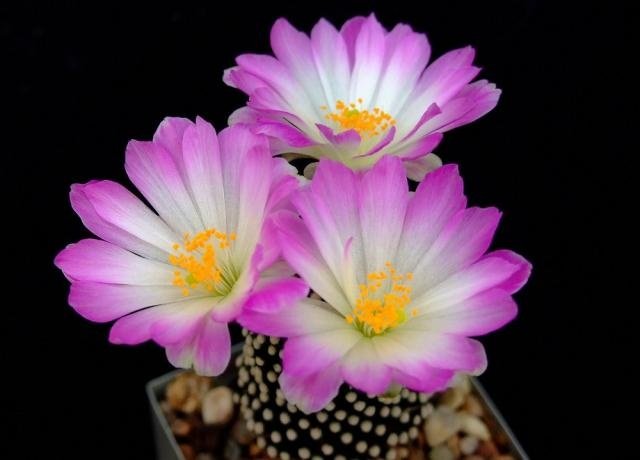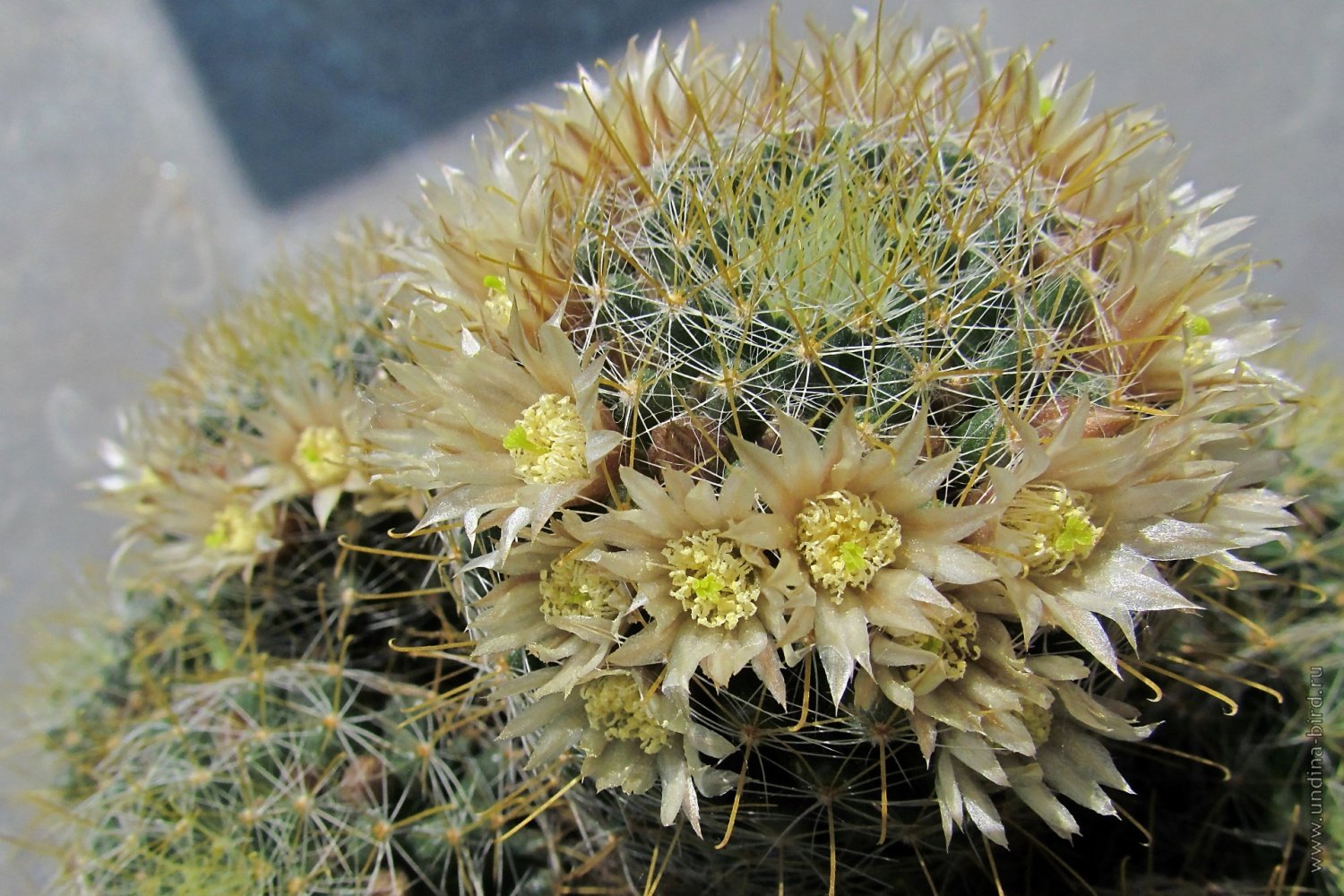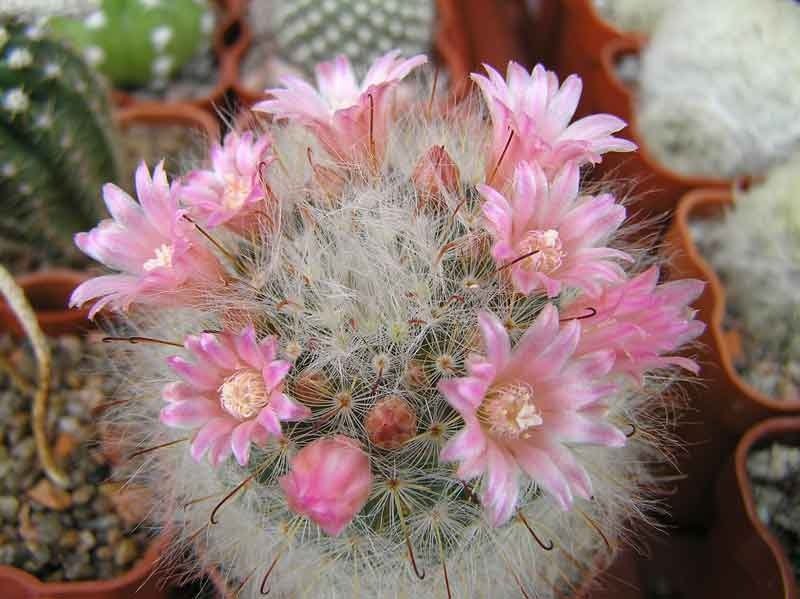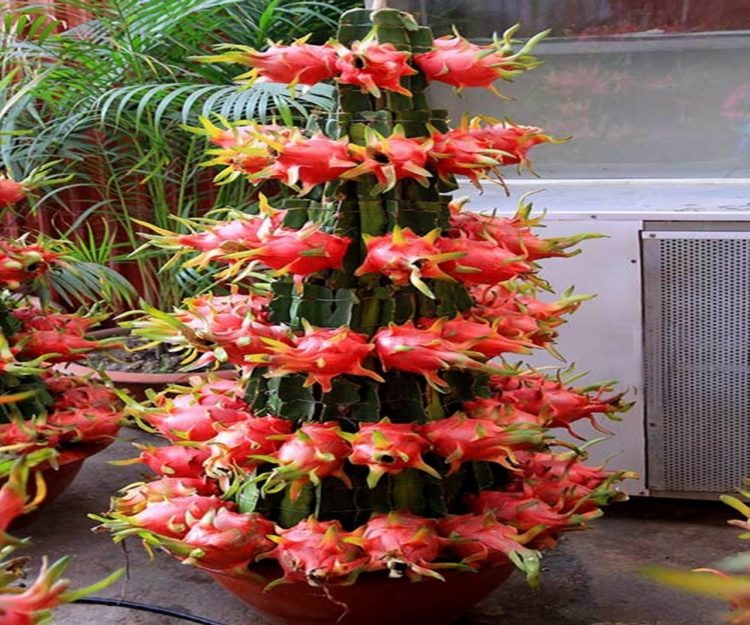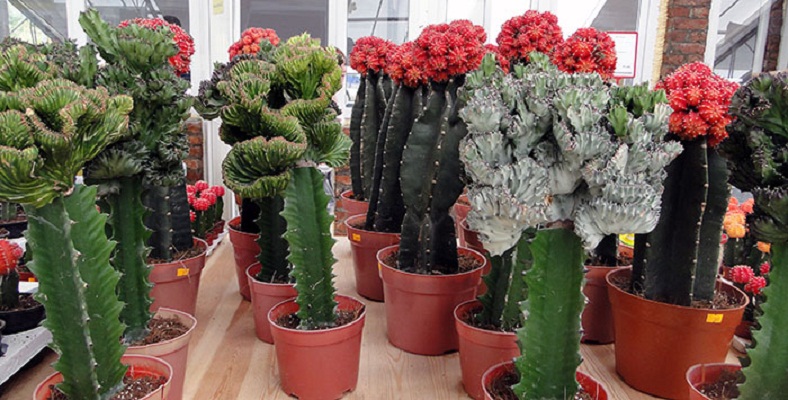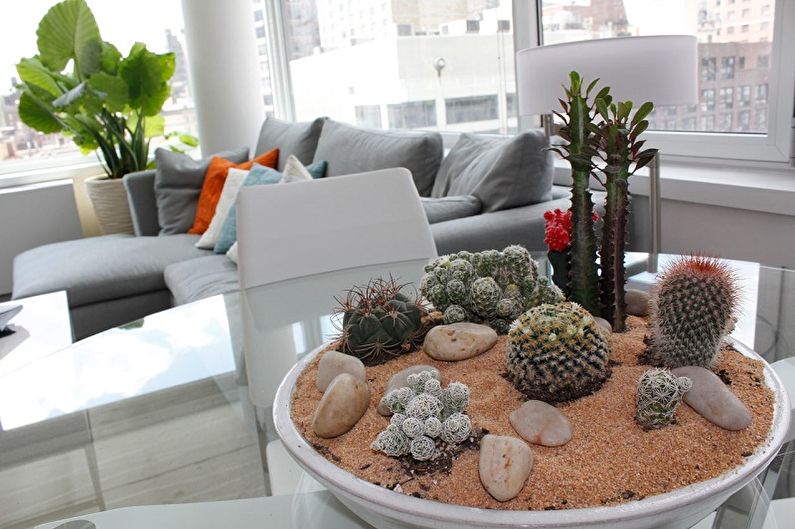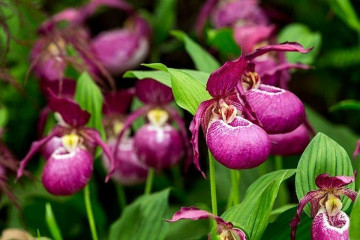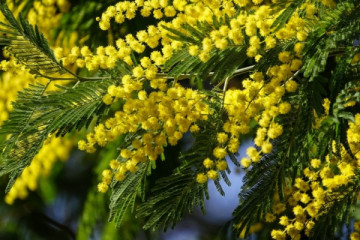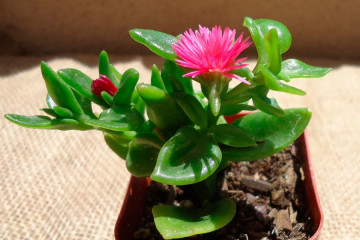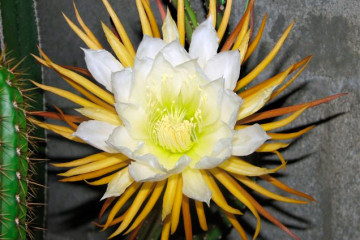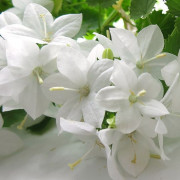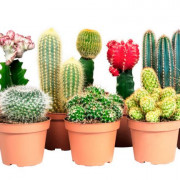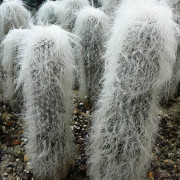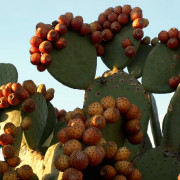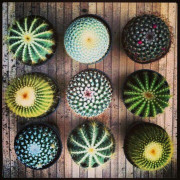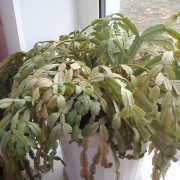Blooming cactus: necessary conditions at home
Content:
Cacti are a unique plant family. They grow in the desert or in the mountains, where there is practically no vegetation, and amaze with their variety of shapes and sizes. The body of a cactus can be spherical, in the form of discs, and have elongated stems. Almost all of them are succulents. Their thickened fleshy parts are adapted for the accumulation and storage of water. This helps the plant survive in extreme, extremely dry desert conditions or in mountainous heights. Most cactus species are covered with thorns, which are highly modified leaves. The thorns perform a protective function, protecting the plant from herbivores.
Types of blooming cacti
Mammillaria is one of the species representing the cactus family, the unusual forms of which conquer gardeners. The main difference between the representatives of Mammillaria is the absence of ribs. They are replaced by tubercles, due to which moisture retention and reflection of sunlight occur. Mammillaria lives in a vast territory from the south of the United States to the central part of Latin America. This type of cactus has more than 200 registered representatives. All kinds of Mammillaria can be found in botanical gardens and greenhouses for cactus growers.
Its most unusual examples include:
Mammillaria Luthi. The cactus consists of several pear-like heads of dark green color. Small thorns are scattered over the body. Luthi's flowers are at the top. Usually these are 2-3 purple flowers with a whitish core and bright yellow stamens. The diameter of the flowers is small - about 3 cm.
Mammillaria Wilda. The main feature of Wilda is the presence of many stems of dark green color, the diameter of which is 1-2 cm. The entire stem is covered with short whitish golden spines. When a cactus begins to bloom, it is literally covered with medium-sized white or light yellow flowers with a lemon-colored core. It grows very quickly, thanks to the children formed around it.
Mammillaria Baum. A cactus of this species is a bush of light green columns, covered with whitish soft spines. Grows in flocks. During flowering, the bushes are covered with yellow flowers exuding aroma.
Mammillaria Bokasana. The uniqueness of this species of Mammillaria is in its cylindrical trunk, covered with stiff hook-like spines and long whitish pile, which makes the spherical stem appear blue-gray. This is a short cactus, it grows up to 6 cm.
It is interesting to watch how the cactus blooms. Almost at the very top, flowering occurs in the form of a wreath of white-pink small flowers.
Features of flowering cactus
For a cactus to bloom, conditions close to its natural environment must be created. It can take years for a novice cactus grower. In order for a cactus to bloom, you need not only take care of it, but also know all the intricacies of the technology for caring for this capricious flower. For example, not all varieties of cacti bloom in a year. There are species that need to grow up to five years old to reveal their unique flowers to the world.
Flowering time
Blooming cacti at home is the most enjoyable moment of cactus growing.Experienced flower growers note that representatives of the Cactus family have flowering at different times. Some throw out the flower in the spring months in the second or third year of life. Schlumberger's Christmas cactus or Decembrist (popular name) blooms in winter. The general flowering of the bush lasts two months (December and January), while the life of one flower is several days.
In the collections of cactusists there are types of cacti with different flowering periods. These include the long-papillary Mammillaria. It is covered with many elongated nipples (nipples) of a dark green color. Blooms in large lemon-yellow flowers. Mammillaria Zeilman is considered one of the most widespread in the collections of cacti. It has a long flowering time. There are also species that are in no hurry to bloom.
How many times during a life a cactus bears fruit
Some may be surprised at the question of the fruiting of cacti, believing that they are only blooming. However, the inhabitants of South America and Africa use the fruits of cacti in their daily diet. All their parts are eaten: stems, seeds and fruits. In total, there are more than 170 species of fruiting cacti.
For example, on the Rozhdestvennik zygocactus a month after flowering, if pollination has occurred, green fruits may appear.
Ripening occurs within 5-7 months. The fruits turn into juicy bright ruby berries. The taste of berries with sourness, there are small seeds inside.
Fruiting is a cactus with the botanical name Hilocereus, or Dragon's Heart, as it is popularly called. It bears fruit from May to November, producing up to 6 crops per season. Hilocereus fruits weigh between 150 grams and 1 kilogram.
No less famous is a variety of cactus called yellow Pitaihaya. It is juicy and has a delicate taste. Pitaihaya is popularly called the Queen of the Night. Its main supplier is Colombia. In appearance, the Queen of the Night is a simple indoor cactus, but it is unusual in that its flowers bloom at night and wither by morning. Many botanical gardens offer special night tours for those wishing to see the Pitaihaya bloom.
Reasons why the cactus does not bloom
Florists who have been dealing with cacti for a number of years note, based on their own experience, that there are types of cacti that do not bloom in nature at all. Therefore, when purchasing a cactus, you need to inquire about its name and read everything that is written about it in the sources for its cultivation, consult with specialists.
The second reason why the cactus does not bloom may be improper care of it. There may be another reason. This is when the cactus has not passed the dormant period. According to experts, this period is different for African and South American cacti. For some, the dormant period is winter, for others, summer. When buying a cactus, you need to clarify which species the purchased specimen belongs to.
Another equally important reason why a cactus does not want to bloom may be too spacious a pot or a potting soil that is not suitable for a cactus.
Why does a cactus give a baby, and not bloom?
The appearance of children on a cactus indicates that the soil is oversaturated with nitrogen. Cactusists note that potassium and phosphorus should be present in fertilizers to promote flowering. If you periodically remove children from the cactus, for him this is a reason for even more kidding. In this case, flowering is out of the question. All the energy of the cactus will be directed to vegetative reproduction.Cactusists draw the attention of beginners to the fact that cacti that are planted from children in the 3rd generation and grown from seed, as a rule, do not bloom.
Caring for a cactus at home
Cacti in indoor floriculture are a fairly common culture. Almost every home has a computer, near it is the main absorber of harmful radiation - a cactus. However, many people forget that it needs to be looked after. When purchasing a cactus, you need to study the conditions of its maintenance so that it looks healthy and beautiful. Group placement of cacti is recommended. When they develop in such a group colony, their uniform and harmonious growth is observed.
In order to successfully grow cacti in the house, it should be borne in mind that factors such as illumination, temperature, air humidity, soil composition and watering affect their development. The season makes certain adjustments to all of these parameters. The growing season for a cactus lasts from March to September. Winter rest will be the months from October to February.
Temperature
The vital activity of a cactus depends on the temperature regime. During the growing season, the cactus is not affected by small temperature fluctuations from 26 to 28 ° C. But, if the ambient temperature becomes more than 30 ° C, the metabolic processes occurring in the plant begin to slow down. The cactus falls into a state of stagnation, stops growing and sheds its buds.
During the winter period, for most cacti, the temperature range is from +10 to + 15C.
Everyone has it the type of cactus, it will be different:
- Wintering of Mammillaria and Echinopsis goes well at a temperature of + 12-15 ° С.
- Rebucia, Atrophytum and Echinocerius winter at temperatures ranging from +8 to + 10 ° C.
- Lower temperatures from 0 to + 5 ° С tolerate Neoessia and Ecobaria well.
As cactusists note, at such temperatures during the winter period, an important stage for the plant occurs - the laying of buds. In comfortable conditions, succulents spend all their strength on growth.
Lighting
Bright diffused light is the best lighting for almost all representatives of the Cactus species. If the illumination is insufficient, this leads to the stretching of the plant, regardless of its shape. The color of the cactus becomes pale, and there is no need to dream that such a cactus will bloom.
With an excess of light, the plant gets a "tan" on the side facing the sun. Therefore, the cactus pot should not be located close to the window pane. The window during the bright sun should be shaded in all possible ways. Moving the cactus pot is not recommended. It's stressful for him. As a result, all buds and flowers can be shed.
Humidity
In a room with cacti, it is desirable to maintain a moderate humidity. They don't like hot stuffy air. Ventilation is required, but no drafts. Florists recommend spraying the plant in the morning and evening hours. It is better to use a fine spray, which creates a fog over the cacti, reminiscent of the conditions of life in nature.
Watering
The opinion that succulents do not need systematic watering is wrong. Excess watering is more destructive for them than dry soil. In order for a cactus to bloom in the summer, it does not need abundant watering, it is enough to water it once a week with water that has been settled for several days. The earth should not be flooded with water, only a lump of earth is moistened. In the fall, the interval between watering increases. Only completely dry soil should be watered.
During the dormant period, the cactus stops absorbing moisture from the soil, so its excess can lead to root rot. The land must be completely dry in winter. Light hydration is done once a month.
As soon as daylight hours begin to increase, the cactus needs to be awakened from hibernation by sprinkling it with hot water, the temperature of which is not more than 50 ° C. After a week, the cactus needs to be watered abundantly. After this procedure, switch to summer watering regime.
Houseplants, including cacti, are properly cared for and thrive and flourish. Illiterate care, in particular, watering with cold water, dry air, improper temperature conditions and lack of light, will become the main cause of the disease. We must not forget to periodically inspect the cacti.
